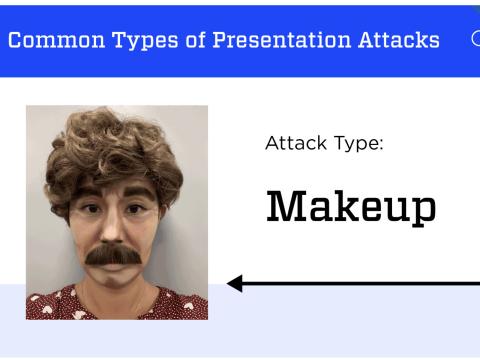Disruptive by Design: Biometrics Could ID Criminals Before They Act
With modern society’s infatuation with selfies, facial recognition technology could easily be used to identify common physical traits of criminals, pinpoint communities dominated by potential offenders and then help determine where to focus crime-prevention programs.
With modern society’s infatuation with selfies, facial recognition technology could easily be used to identify common physical traits of criminals, pinpoint communities dominated by potential offenders and then help determine where to focus crime-prevention programs.
Crime statistics largely dictate the locations of these programs, but a system based on facial recognition of criminal traits could offer a more proactive and effective method, among other benefits. A study comparing physical traits of prisoners using 3-D facial recognition technology could advance criminal-prevention efforts and help tailor our criminal justice programs and intelligence collection methods. We then could prevent crime and terrorism without racial profiling. Another potential benefit—albeit a controversial one—is that the U.S. military branches might be able to use the technology to weed out recruits likely to end their military careers in jail.
Facial recognition focuses on physical traits that will not change as people age. These physical traits include curves of the eye socket, nose and chin. Certain qualities to these features can be linked to potential criminals.
Two Chinese researchers announced in late 2016 that their facial recognition algorithms could identify criminals with a high degree of accuracy. New Scientist reported at the time that the researchers exploited machine learning, asking facial recognition software to guess whether a person in an ID-style picture was a criminal and then feeding it the correct answer. It learned to tell the difference, eventually achieving up to 90 percent accuracy. The magazine also reported that the study was highly criticized by other researchers, in part, because the photos of criminals and noncriminals came from two different sources, which may have influenced the software.
Another study of 32 Caucasian men, all without scars, tattoos or excessive facial hair and with neutral expressions, asked participants to indicate how likely it was that each man was a certain type of criminal, including murderer, rapist, thief, forger, assailant, arsonist or drug dealer. Half the men were convicted criminals. Two different experiments proved that individuals can tell who is a criminal and who is not based on physical appearances, though the participants could not discern the type of crime. Other studies based on records from the 19th, 20th and 21st centuries link shorter height, excessive weight and homeliness to criminal behavior.
It is vital, of course, to remember that the links between physical traits and crime are not a direct cause-and-effect relationship. And it goes without saying that no one should be assumed guilty or treated as a criminal based solely on physical appearances.
But we can apply algorithms to distinguish traits, calculate whether any physical characteristics are abnormally higher in high-crime areas and then decide how to deter any potential crimes. We can also choose which technology is most useful: biometric facial recognition with surface texture analysis or 3-D scans.
Fortunately, many people have no qualms about taking selfies and making them publicly available. In fact, some dating apps, such as Bumble, already use facial recognition to authenticate users, and Snapchat maps detailed facial nodes to enable filters. According to Snapchat, its technology does not store facial data, but hundreds of thousands of selfies are available for open source research. With applications such as Snapchat, Bumble and Tinder, it would be easy to conduct studies and develop algorithms capable of identifying potential criminals. While the capability would undoubtedly spark concerns and criticisms, it also could reduce crime, including domestic violence, rape and mass shootings.
Ryan René Rosado is a consultant and an analyst for Ernst & Young’s Cyber Threat Intelligence (CTI) team. She is pursuing a bachelor’s degree in cybersecurity at Utica College and a bachelor’s degree in emergency management at the State University of New York (SUNY) Empire State College. She is an active member of AFCEA International’s Women in AFCEA committee and AFCEA’s Alamo Chapter. The views expressed here are her own.




Comments